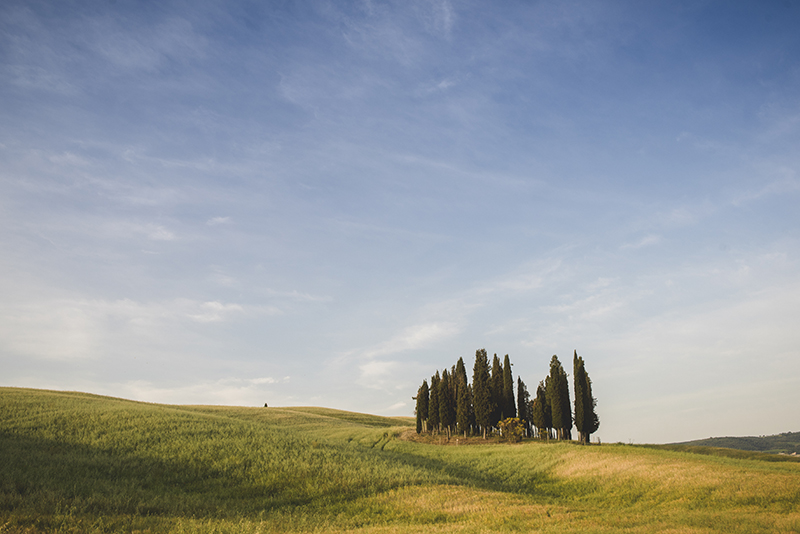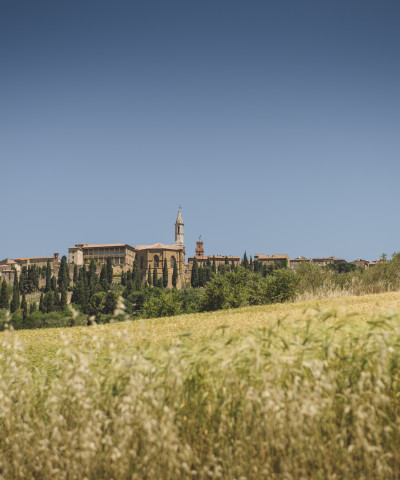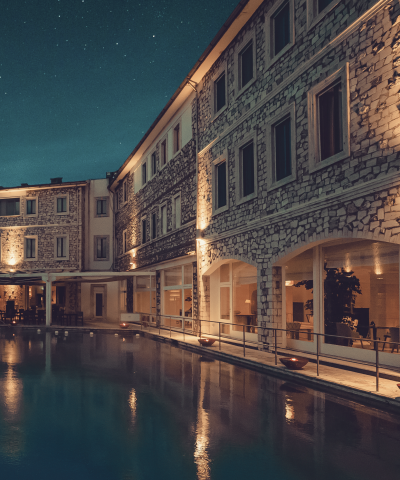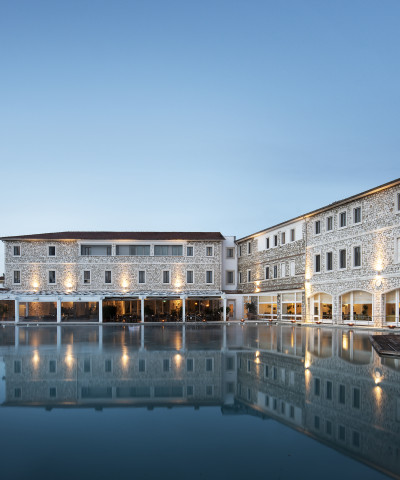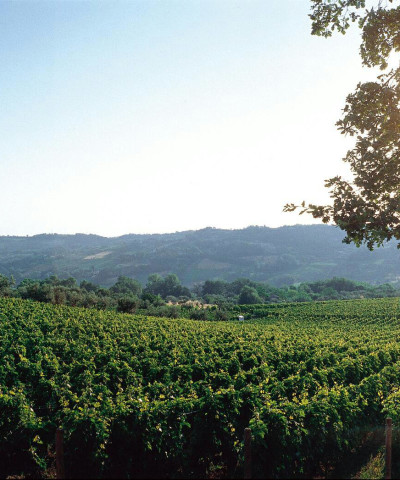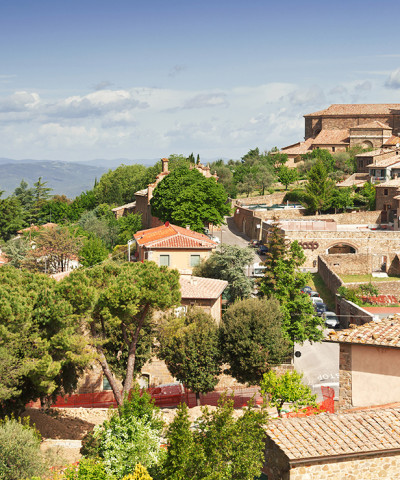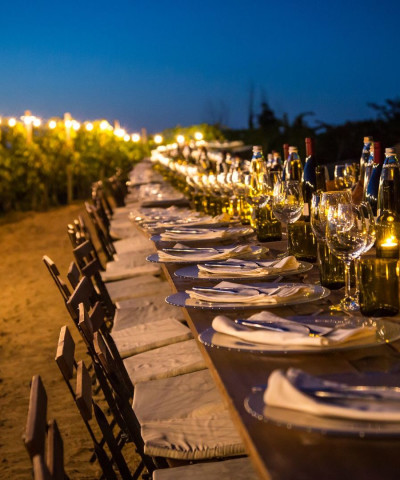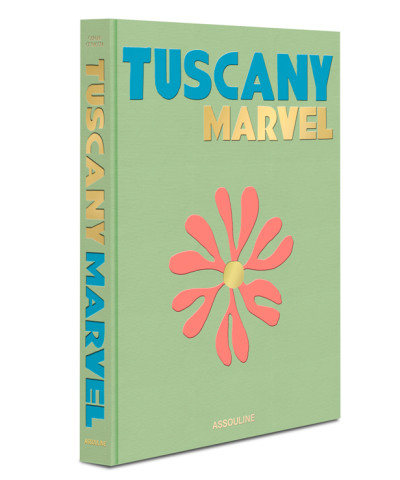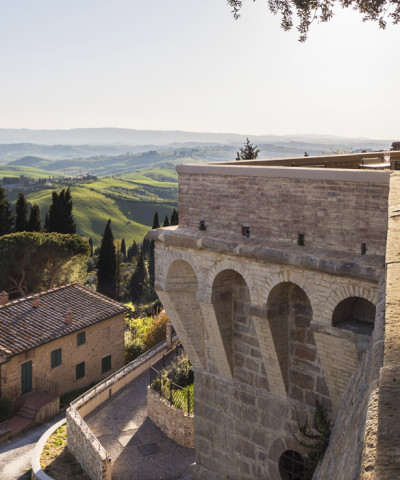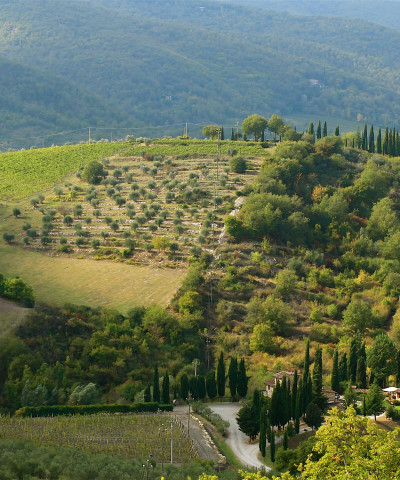Over the hill of Val d’Orcia
Guided by the advice of three leading figures from the most beautiful valley in Italy
For Ridley Scott, the Val d’Orcia Is the earthly translation of paradise. It’s really the views along the SP14, between San Quirico d’Orcia and Pienza, the Campi Elisi where The Gladiator dreams of seeing his family again. The setting of the 5-Oscar film owes its beauty to this sublime corner of Tuscany, a UNESCO heritage site. To find the right light, the crew stayed in Terrapille for 15 days. Another iconic film, The English Patient, winner of 9 Oscars, directed by Anthony Minghella, exalted the absolute beauty of the countryside around Pienza on the big screen: the former Benedictine monastery of Sant’Anna in Camprena was the location for the encounters between Juliette Binoche and Ralph Fiennes.
We are in the deep south of Tuscany in a heavenly valley between the province of Siena and part of Grosseto, north and east of Mount Amiata, near the border with Umbria. The grace of the landscape seems to hide something mysterious in its rigorously pure lines and design, as if the nature here were more given to art than elsewhere. The lines are broken by the towns of Castiglione d’Orcia, Montalcino, Pienza, Radicofani, San Quirico d’Orcia and dotted with enchanting villages such as Contignano, Monticchiello, Buonconvento, Bagno Vignoni, Rocca d’Orcia, Bagni San Filippo, Sarteano, and the ward of Castiglioncello del Trinoro. Isolated farmsteads are scattered here and there on top of hills as round as marbles, and white roads descend in zigzags marked by rows of cypress trees. These are the Crete Senesi, grooved by white rock formations, which in the autumn assume the appearance of a gray-blue lunar sea due to their clay soil. It really is difficult to say whether Tuscany is beautiful here by gift of nature or by the hand of man. Perhaps it is so due to an atavistic, osmotic fusion of both.
The Marchioness Benedetta Origo is a member of a family, a local symbol, whose name immediately recalls the extraordinary beauty of Villa La Foce (in the municipality of Chianciano Terme, visits by appointment) a driving force behind the agriculture, but also social and cultural activities, such as the elegant summer festival of classical music, Incontri in Terra di Siena. For her, a visitor must see Pienza, the Renaissance utopian city wanted by Pope Pius II (at the time Enea Silvio Piccolomini), Monticchiello and the first stretch of the Via Cassia coming from Florence, Buonconvento, recently in the press for Barack and Michelle Obama’s stay at nearby Borgo Finocchieto. But the village of Benedetta Origo’s heart is San Quirico d’Orcia with the wonderful Romanesque Collegiate. And then Bagno Vignoni Alto with breath-taking views “that almost nobody knows, because it is overshadowed by the fame of Bagno Vignoni, and its ancient stone bath of steaming hot water.” When guests at Villa la Foce ask where to eat, Bendetta gladly recommends the Perillà osteria in Rocca d’Orcia and their Dopolavoro (Strada della Vittoria, 90 - Località La Foce) and for local crafts, the expert ceramicist Flavio Foderini and his workshop Kamars, right at the exit of the A1 Chiusi-Chianciano Terme motorway.
Donatella Cinelli Colombini, a native of Siena, has a degree in Medieval Art History, but her name appears among the most appreciated and esteemed vintners in the area. Fine wines are made at Casato Prime Donne in Montalcino and the Fattoria del Colle di Trequanda overlooking the Crete Senesi. As an art expert and collector, her advice is to visit the little Church of Santa Flora and Lucilla in Torrita to see the two wonderful lunettes with the Baptism of Christ by Donatello. For shopping, “definitely the workshop of Piero Sbarluzzi In Pienza. He is the last Renaissance style artisan and makes unique pieces and pottery in series.” For food, she recommends the Osteria Il Granaio a Rapolano Terme, almost ignored by the guides, and Saxa Cuntaria in Piancastagnaio, ancient cuisine that uses plenty of local flowers and herbs. But also Rossano Vinciarelli’s pastry shop In Montalcino to “dive into his ricciarelli.” And finally, the last delight: “8 km from home is Barrino di Montisi, where Gianluca Monaci makes authentic French, Italian and other ethnic treats.”
A Montalcino native, Mario Machetti began collecting Brunello wines when barely more than a teenager, and has the best stocked private wine cellar in Montalcino, now available to diners at Il Giglio restaurant, with traditional local cuisine made by his wife, and a few fine guest rooms. Anna prepares all the pasta by hand. Very popular are pinci alle briciole, tagliatelle with porcini mushrooms, and the second courses Brunello braised beef or lamb chops. For those new to Montalcino, Mario recommends the Fortress where “on fine days, you can enjoy a 360 degree view as far as the eye can see, and inside is a great wine bar. The most beautiful area to enjoy a really spectacular sunset,” he continues, “is the western part of Montalcino, along the avenue that goes from the Fortress to Madonna del Soccorso. And then another thing I always recommend to my guests is the ancient Cistercian abbey of Sant’Antimo, a white mirage in the midst of vineyards. Another must-see is the Poggio alle Mura Castle with the adjoining glass museum today owned by a wine producer. A recommended winery is Biondi Santi, because it is the one that invented our legendary Brunello. But without forgetting the nineteenth century Caffè Fiaschetteria in the main square of the town, classified as one of Italy’s historic places and the excellent peppered bread from the Lambardi bakery.”






